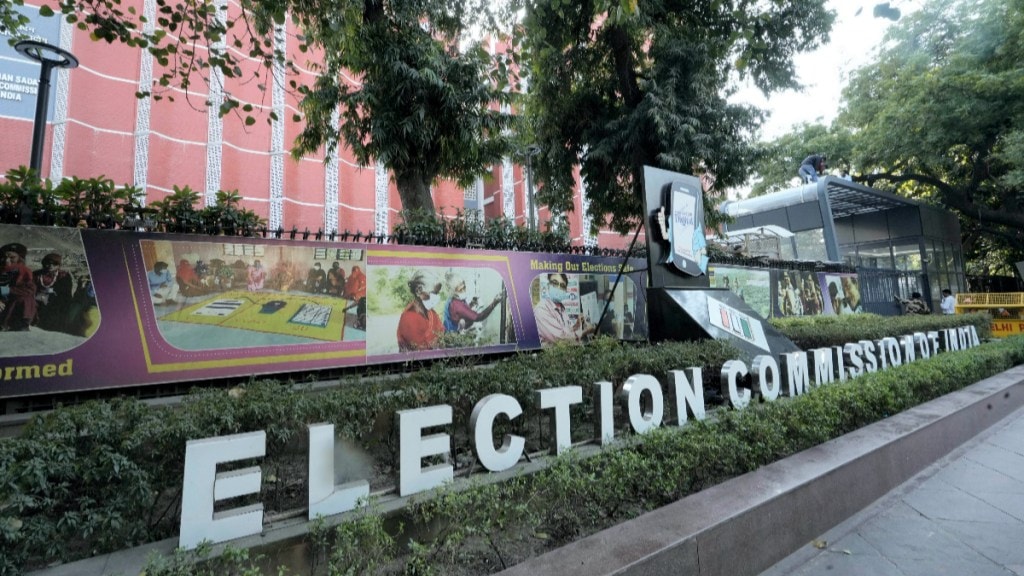With India going to polls this April, UBS Securities said, based on most of the opinion polls, BJP will perform well in the general elections and that political stability would likely lead to policy continuity, which could bode well for market sentiment. “During a potential third term for Modi, we would expect further progress towards digitalisation and continued policy push toward manufacturing/exports, given India’s increasing footprint in global value chains,” said Tanvee Gupta Jain, UBS India Economist.
While maintaining that it does not predict the election outcome, UBS stated that recent opinion polls continue to suggest that the BJP will perform well in the general election. “Based on these opinion polls, Prime Minister Modi remains the most popular leader in India. The recent performance in assembly elections suggest that: a) the ‘Modi factor’; b) the perception of the work done; and c) implementation of welfare programmes worked in favour of BJP. ,” it said.
The Election Commission of India (ECI) over the weekend announced that the 2024 general election will be held in seven phases between 19 April and 1 June. The counting will be held on June 4.
Policy reforms under different election scenarios
For the upcoming elections, there are three possible scenarios: a) BJP single-party majority; b) BJP-led coalition; c) weak coalition led by INDIA alliance. Per its investor discussions and valuation multiples, UBS said that the first two outcomes are largely priced in by the market.
In the first scenario, UBS stated, the focus will be on policy continuity which bodes well for business sentiment and much anticipated private corporate capex recovery. “According to media reports, BJP seems to be already working on a 100-day plan for immediate steps to be taken once the new government is formed for the ‘Viksit Bharat 2047‘ plan’s quick execution. In addition, the implementation of supply side reforms could pick up including clean energy transition, increase in infrastructure spending (both digital and physical), manufacturing push and other targeted policy initiatives (towards youth, poor, women and farmers),” it said.
In the second scenario, per the UBS analysis, reform momentum could remain broadly similar, but some tougher ones may not see much progress and/or are likely to be put on hold (including disinvestment, land bill & uniform civil code). However, comfort over fiscal discipline would be less of a concern for investors in this scenario, it said.
In the third scenario, Tanvee Gupta Jain said, “We think economic policy approach could be largely aligned but the markets could have worries about fiscal discipline, less decisive government leading to lags in implementing supply side reforms. There could also be a delay in the private corporate capex recovery from weaker business confidence because of a surprise political outcome.”
How is India faring on external stability metrics?
The government has refrained from turning populist and remains on the fiscal consolidation path in the run up to the 2024 election. Tanvee Gupta Jain said, “We estimate India’s CAD narrowed to less than 1 per cent of GDP in FY24 (vs. 1.2 per cent forecasted earlier). We believe this improvement has been largely led by: 1) A contained goods trade deficit (on lower commodity imports, especially oil and coal); 2) Improved net services receipts to 4.7 per cent of GDP in FY24 (UBSe) vs. 3 per cent of GDP during the pre-pandemic period; 3) An increase in remittance inflow toward 3.5 per cent of GDP in FY23-24 (UBSe) after it was largely steady, at 2.5-3 per cent of GDP, in FY16-20; and 4) Lastly, macroeconomic stability. Heading into FY25, we estimate CAD will modestly increase to 1.3 per cent of GDP. We estimate India can sustain global crude oil prices up to US$90/bbl, all else remaining unchanged, but the lower oil goes, the better it would be for India.”
What has worked and what are key concerns?
Delivery on poll manifestos:
Election manifestos are released by political parties to outline their promises/priorities and generally cover all key aspects related to economic, social, development and governance issues. UBS’ analysis of the past four general election manifestos suggested that the Moid government was better in fulfilling their stated manifesto compared to Congress.
The Modi government’s focus on balancing economic reforms with social welfare schemes for the bottom of the pyramid (including a potable water connection for every household, the state provision of housing support and medical insurance, the opening of bank accounts, free LPG connections and free food rations, among others) seems to have worked in their favour. Besides economic reforms, recent opinion polls suggest the government’s handling of COVID-19, building the Ram Temple and the revocation of Article 370 have helped bolster support, stated UBS. However, it maintained that unemployment and inflation remained key concerns.
Populist schemes vs inclusive growth:
Over the past year, the recovery in rural demand has been mixed owing to weather related uncertainty, tepid rural wage growth and the government’s supply-side measures (to contain inflation). However, UBS stated, the Modi government has not announced any substantial pro-rural populist schemes in the run up to the 2014 elections to entice voters and has instead focused on inclusive growth with expenditure on rural-focused schemes (including drinking water, employment support, housing and rural roads) recording a 16 per cent CAGR over FY19-24.
This is contrary to the fact that women-centric policies have taken centre stage, especially since 2023. “The growing inclination of political parties to offer targeted welfare benefits to women (cash support, free bus travel, cooking gas subsidies, women-centric legislation, amongst others) is closely linked to the rising percentage of women participating in the electoral process over the years,” stated the UBS report. Notably, the voter turnout reversed in the 2019 election for the first time with female voter turnout being higher than that of males.

